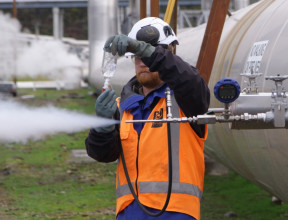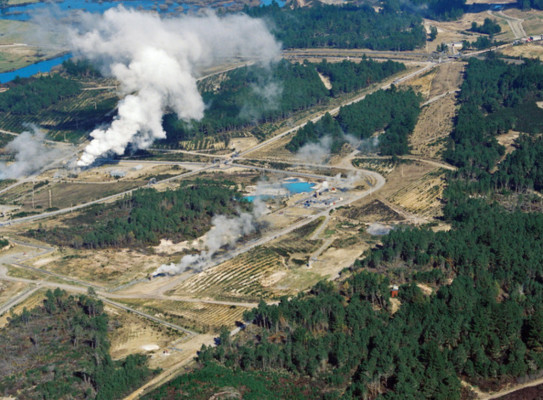
New Zealand's history of geothermal energy

'Geothermal' comes from the Greek words 'geo, meaning Earth, and ‘thermal’ meaning heat. The deeper it occurs below the ground, the hotter its temperature.
According to one telling of Māori tradition, the geothermal fields in the central North Island were created when Te Pupu and Te Hoata, goddesses of fire, emerged from the Earth’s core in search of Ngātoroirangi (a powerful high priest), who had been stranded freezing on Mt Tongariro. Wherever they surfaced, they left geysers, hot springs and mud pools, leaving the path of geothermal activity that remains today.
In the late 1950s, geothermal wells were drilled near Kawerau so the heat could be used in the timber and paper mills. By 1958, geothermal steam was being used to generate electricity, with the opening of the Wairakei Power Station.
Under Te Tiriti o Waitangi, land and associated geothermal resources have been returned to iwi ownership and have been developed by land trusts and businesses for tourism, electricity generation and processing.
